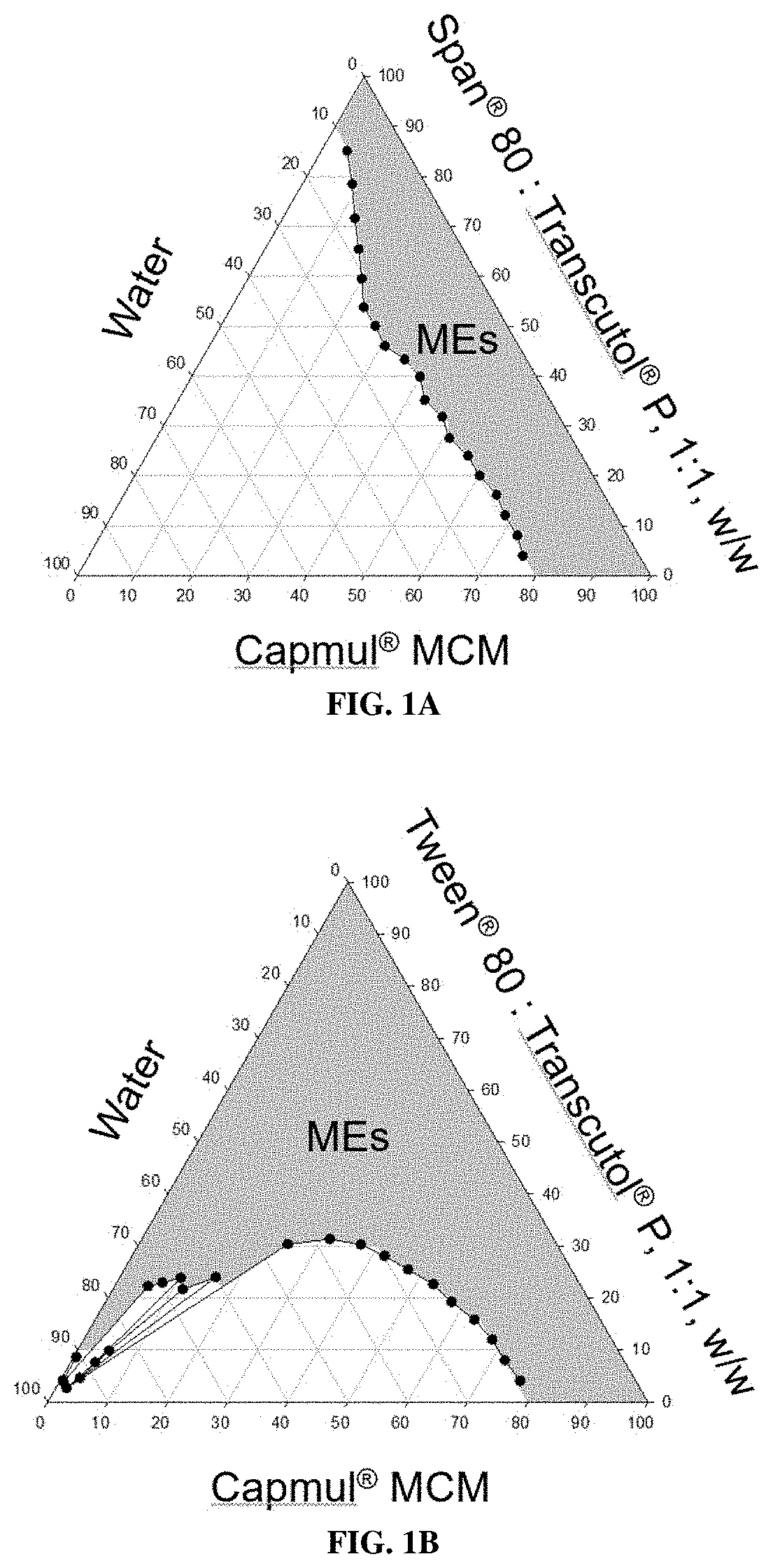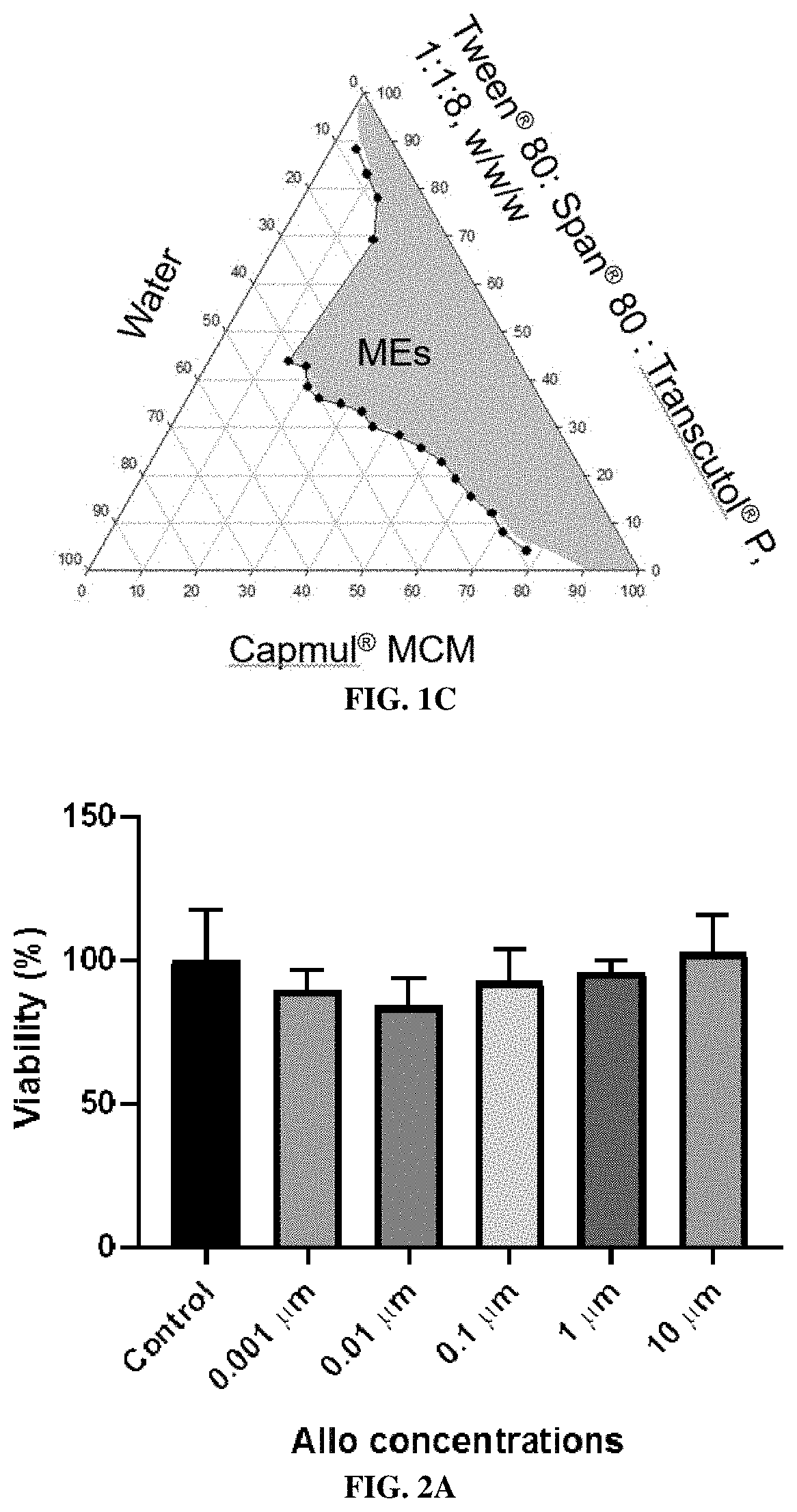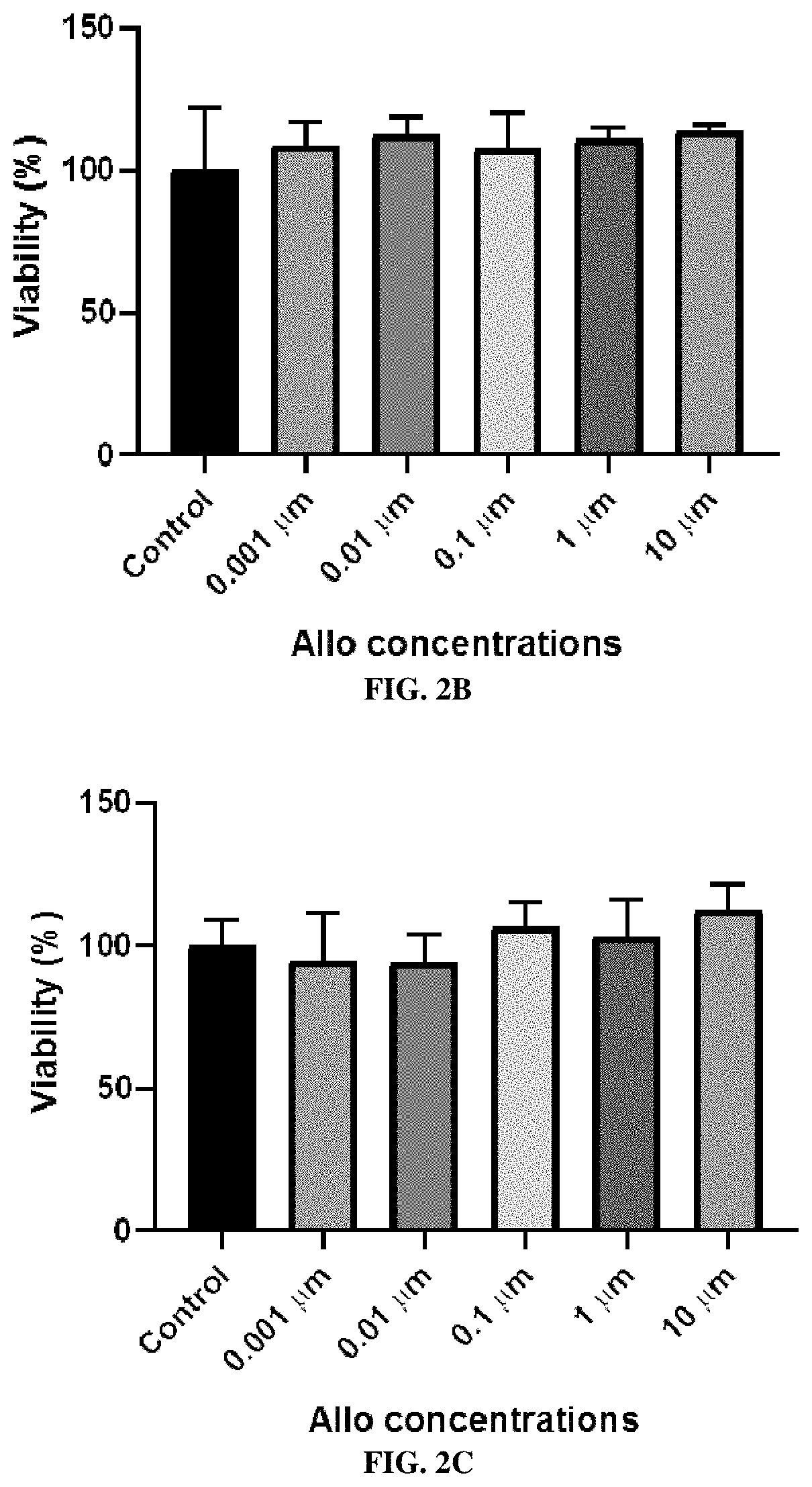Topical neurosteroid formulations
a neurosteroid and formulation technology, applied in the field of pharmaceutical compositions, can solve the problems of accelerating disease progression, no therapeutic composition or treatment method satisfactory to repair, or counteract, the neuronal damage and/or the associated cognitive decline, and achieve the effect of convenient, safe and stabl
- Summary
- Abstract
- Description
- Claims
- Application Information
AI Technical Summary
Benefits of technology
Problems solved by technology
Method used
Image
Examples
example 1
Solubility of Allo in oils
[0279]Methods
[0280]The solubility of Allo was determined in CAPMUL® MCM EP / NF (monodiglyceride of medium chain fatty acids, commercially available from Abitec Corporation (Columbus, Ohio), CAS Number 91744-32-0, or 26402-22-2, and 26402-26-6), isopropyl myristate, and oleic acid, by adding an excess amount of Allo to 1 mL of each oil in a glass vial. The vial was rocked for 72 h at room temperature. The excessive amount of Allo was filtered through a syringe membrane filter (0.2 μm). The amount of Allo dissolved in each oil was determined using HPLC.
[0281]An HPLC analytical method was developed by employing the SHIMADZU LC2010A HT for in vitro and ex vivo evaluation of Allo from microemulsions (MEs). Chromatographic separation was achieved using a PHENOMENEX® KINETEX® Phenyl-hexyl 2.6 μm reverse-phase (150×4.6 mm) column. The mobile phase was a mixture of 0.1% acetic acid in water and methanol, 20:80 (v / v) and flowed at 0.4 ml / min for 15 min The injection v...
example 2
Construction of Pseudo Ternary Phase Diagrams
[0284]Methods
[0285]MEs are thermodynamically stable and isotropic mixtures of oil, water, and surfactant(s) / co-surfactant(s). To develop Allo MEs, oils and surfactants commonly employed in MEs were initially screened by combining these components at a 50:50 weight ratio. Tested oils were CAPTEX® 300 EP / NF (medium chain triglycerides, CAS Number 65381-09-1), CAPMUL® MCM EP / NF (CAS Number 91744-32-0, or 26402-22-2, and 26402-26-6), isopropyl myristate, and oleic acid. Surfactants / co-surfactants tested were TWEEN® 80 (polysorbate 80), CREMOPHOR EL® (PEG-35 castor oil, CAS number 61791-12-6), SPAN® 80 (sorbitan monooleate), LABRAFIL® M 1944 CS (oleoyl polyoxyl-6-glycerides) and TRANSCUTOL® P (diethylene glycol monoethyl ether). Ethanol, propylene glycol, and polyethylene glycol 400 were tested as solvents, and ethanol and propylene glycol were further evaluated as a penetration enhancer in the in vitro permeation study. The amount of water in...
example 3
In Vitro Cell Viability Study After the Treatment of Allo
[0289]Methods
[0290]Cell viability was evaluated in human skin (HaCaT)cell line by performing a resazurin assay after the treatment of Allo. Resazurin is a cell permeable redox indicator, and viable cells with active metabolism can reduce resazurin into resorufin, which is fluorescent (Riss et al., Cell Viability Assays, in Assay Guidance Manual, 2016). The HaCaT cells were grown in optimized Dubelco's Modified Eagle's medium (DMEM) (containing 2 mM of L-glutamine, 2 mM of sodium pyruvate, 4500 mg / L of glucose, and 1500 mg / L of sodium bicarbonate) supplemented with 10% fetal bovine serum (FBS). The TR 146 cells were grown in Ham's F12 medium supplemented with 10% FBS, 1% penicillin-streptomycin, and 0.2% L-Glutamine The RPMI 2650 cells were grown in Eagle's Minimum Essential medium (EMEM) supplemented with 10% FBS, 1% penicillin-streptomycin, and 0.2% amphotericin D. Cells were plated in a 96-well plate at a density of 5,000 ce...
PUM
 Login to View More
Login to View More Abstract
Description
Claims
Application Information
 Login to View More
Login to View More - R&D
- Intellectual Property
- Life Sciences
- Materials
- Tech Scout
- Unparalleled Data Quality
- Higher Quality Content
- 60% Fewer Hallucinations
Browse by: Latest US Patents, China's latest patents, Technical Efficacy Thesaurus, Application Domain, Technology Topic, Popular Technical Reports.
© 2025 PatSnap. All rights reserved.Legal|Privacy policy|Modern Slavery Act Transparency Statement|Sitemap|About US| Contact US: help@patsnap.com



